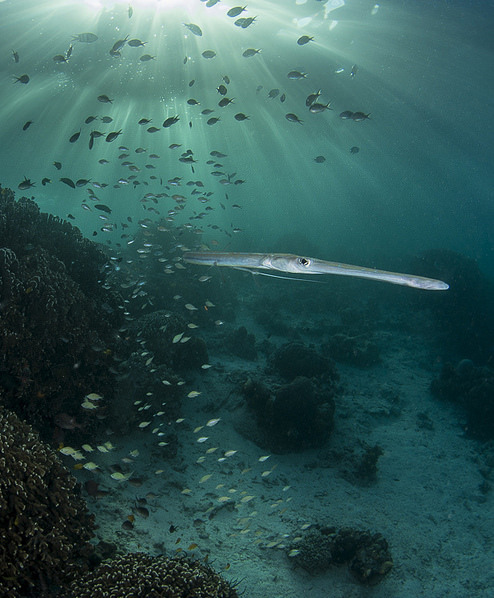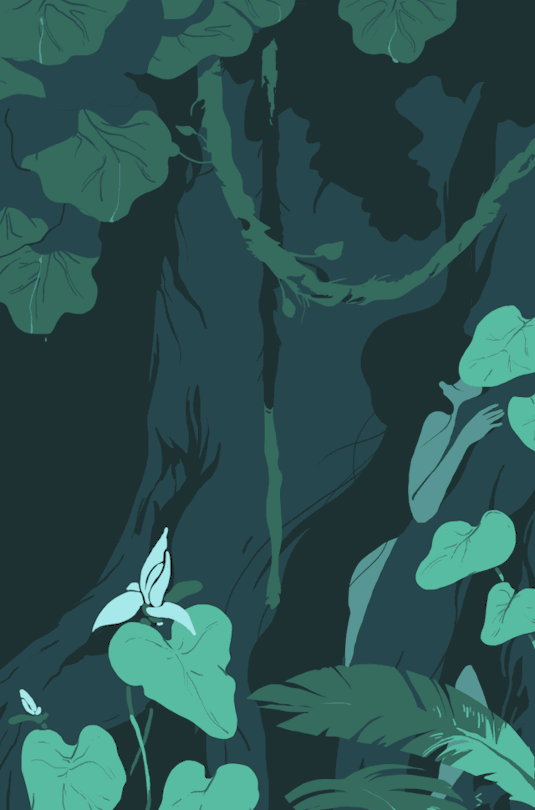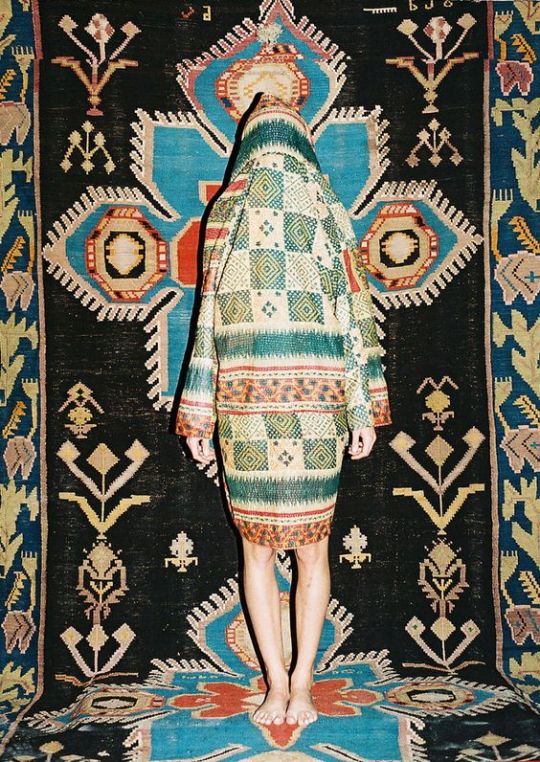Don't wanna be here? Send us removal request.
Text
Level 5: Case Study
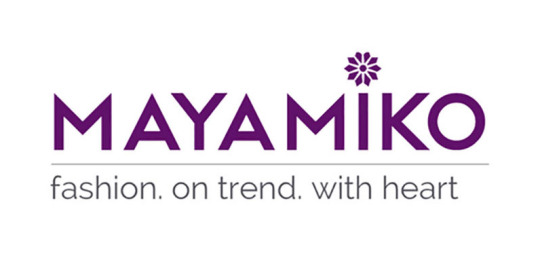
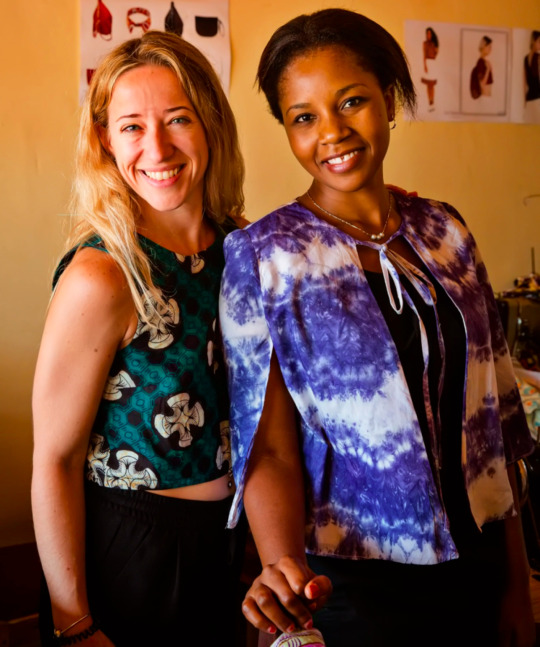
The background
In 2008, Paola Masperi established Mayamiko trust, a charitable trust dedicated to creating sustainable solutions to eradicate poverty and other social issues affecting low socioeconomic society. After extensive travel in Africa, Paola partnered with creative artisans in Malawi to create Mayamiko, a fashion-forward line of women's wear. Mayamiko is a collection of clothing accessories and homewares, ethically made in Malawi fusing together contemporary design with traditional African techniques. Ever since the trust has embarked on several life-changing projects and continues to support the people of Malawi towards sustainable living. The objective behind Paola's charity has always been to nurture skills that can be transferable to trade practices in the hope that these skills will one day lift people out of poverty towards a better future.
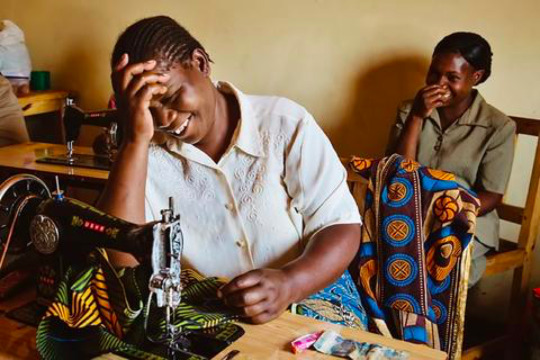
Moving forward…
In 2013, Mayamiko lab was established as an offshoot from their charitable project, The Mayamiko Trust. The lab was designed to provide training skills, education, nutrition, sanitation, entrepreneurship skills, self-belief and promote fairer trade practices. In Malawi, tailoring and sewing have been a widespread skill but often at a basic level. Currently, the project trains local disadvantaged women who are affected by the HIV pandemic or who are carers of HIV orphans. The Mayamiko fashion brand keeps graduates and local staff in employment adhering to their ethical promise. The Mayamiko brand also funds workshop activities and reinvests in the growth of their workshops, so that more people can be employed and lifted out of poverty. Mayamiko brand donates directly to Mayamiko Trust for each garment sold.
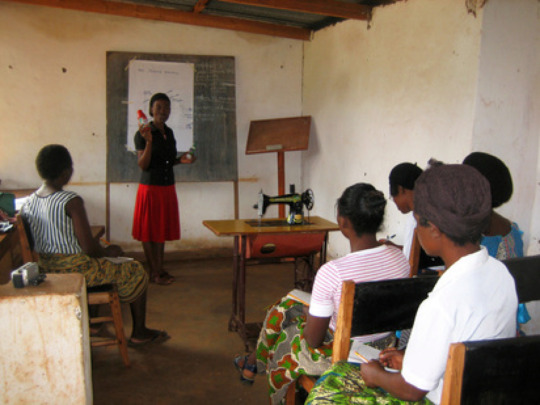
Their ethical standards include:
No forced labour
Safe and hygienic working conditions
No child labour
Living wages
No discrimination
No excessive working hours
Regular employment to be provided
No harsh or inhumane treatment
Training and professional development for all employees
A nutritious meal every day
Life skill sensitization and individual support
Support to set up independent businesses and cooperatives when desired
Financial education and access to microfinance, loans and grants
Pension scheme and gratuity
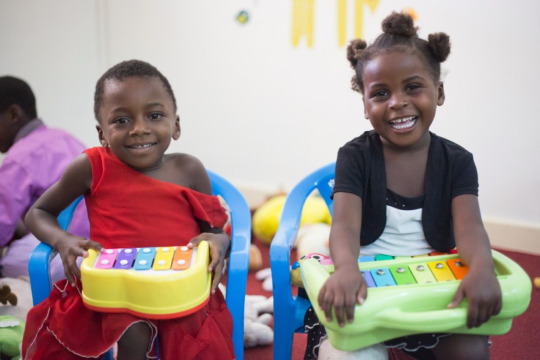
New Spins on existing products
Mayamiko lab operates a zero waste workshop, where each piece of fabric and cutting room waste is recycled into something new and beautiful. Some plans include design collaborations and the development of a unique textile design. They focus on efficient garment design and pattern cutting techniques, aiming to use 90-100% of the fabric when cutting. Mayamiko also donates some of their fabric to the community and holds workshops to teach each other clever ways of up recycling even the smallest piece of beautiful fabrics. They have created colourful and unique doormats, mops, accessories and even sanitary pads. The African print details and trims embody their zero waste policy.
Under explored area of fashion
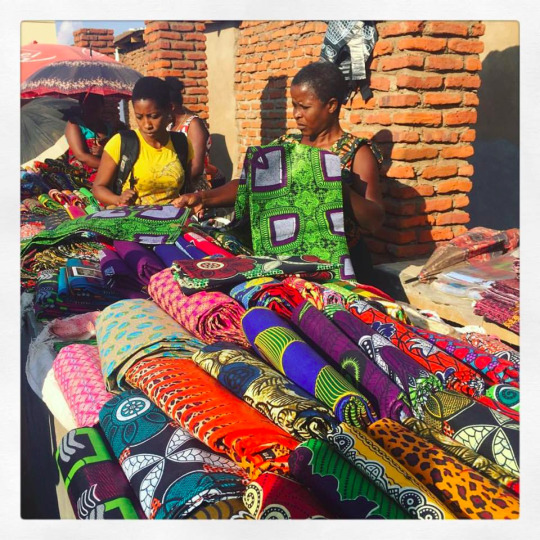
Mayamiko stands out from the fashion crowd via their fashion forward looks in stylish and bold traditional African printed cotton, known locally as “Chitenje”. Their textiles are handpicked from the local fabrics market in Malawi as well as from the neighbouring African countries. They also work with a local co-operative of women traders to source the most exclusive prints and produce a very limited number of pieces. “Rebirth” is a fully recycled capsule collection, giving a whole new life to pre-loved reclaimed fabrics. Mayamiko believes that ethical production should not compromise the quality and design of the product and should add to its exquisiteness and value. The productions are of high-quality luxury ethical goods that are unique to the market. Gorgeous batik and tie-dye fabrics are hand-dyed by talented artisans at the Malawi Council for the Handicapped (MaCoHa), which employees and trains wonderful humans, differently abled.
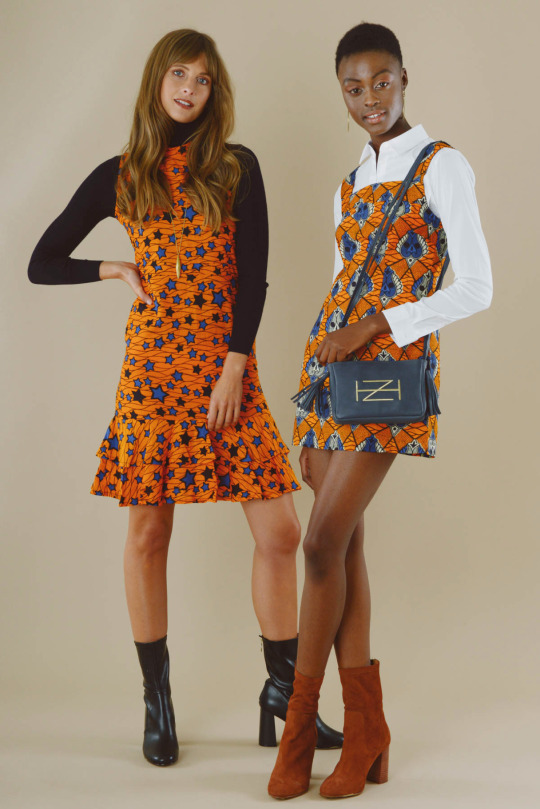
How movements were created
Malawi is a nation of diverse wilderness, inherent optimism and radiant smiles. Unfortunately, many of the rural communities in Malawi, whose people are some of the poorest in the world, are also some of the most ill-equipped to deal with mounting social problems. Mayamiko purchases filter back into these communities of Malawi where it's needed most. It's thanks to the work of social entrepreneurs empowering women in these afflicted communities who are giving rise to a movement of change. According to UNICEF, the literacy rate in Malawi for women is only 50%. This education gap is one of the key reasons many women are inhibited in pursuing their own livelihood. To remedy this, the Mayamiko team started hosting workshops to empower these women with more in-depth technical training, entrepreneurship skills, financial planning and most importantly, to gain confidence. Their hard work has not gone unnoticed. As a member of the Ethical Fashion Forums ‘Fellowship 500,' and ‘I Prefer 30’movement, Mayamiko is at the forefront of the sustainable fashion movement. Mayamiko brand has been widely recognised as a "Brand to Watch" that's "Changing Lives" by various industry bodies and have also been shortlisted for Vogue Italia's Eco Talents Scouting 2013 showing their work at Dubai Mall. They adhere to the ethical trade initiative's principles.

New product categories
In 2015, Mayamiko launched a new range of Tee tops, fusing bold and plain prints. This introductory range offered a choice of bold African fabrics, subtle batik cotton or eternal plains, with a touch of organza, and unique details. Mayamiko introduced a mini yoga inspired range "The Namaste Collection" comprising clothing and accessories. The range of clothing and accessories was not produced using technical textiles, but their local woven cotton. The T-shirt included in the Namaste sets is made of 100% GOTS® certified organic combed cotton. Ethical and fair trade manufacturer “Mantis World” also produces it in Africa. Mayamiko also sources natural soaps from Chiyambi, where they are handmade using locally sourced ingredients. The soaps are produced near Dzaleka Refugee Camp. Refugees and Malawians make up the African textile packaging along with their disabilities or disabled family members. All profits are re-invested in community development. Mayamiko pays Chiyambi a fair price for each piece.
Only 10-15 pieces are ever made in their exclusive fabric. Unique through, this also means that as fabrics are often artisanal and handmade, fabric and colour imperfection are possible and they add to the uniqueness of the pieces, rather than representing a defect or fault.
Domestic market in the UK
The UK is currently experiencing a surge in the interest and development of ethical production solutions. By providing UK consumers with the choice to buy ethical goods and by offering designers the options of small ethical production runs, Mayamiko is working towards promoting growth and development of the ethical fashion industry within the UK.
Wholesale orders are shipped from the UK or Malawi.
Interesting new business models
Mayamiko has launched a new initiative where all trainees, graduating from the Fashion Lab, can take out a grant to fund the purchase of a sewing machine and a business starter kit to help them start their own business. Some graduates decide to start working independently, while others join forces to set up local cooperatives. Mayamiko asks that each applicant saves 25% of the required amount, and commits to funding the remaining 75%. Mayamiko also encourages people to sponsor a sewing machine and help trainees to become proficient in the craft of tailoring.
Charity
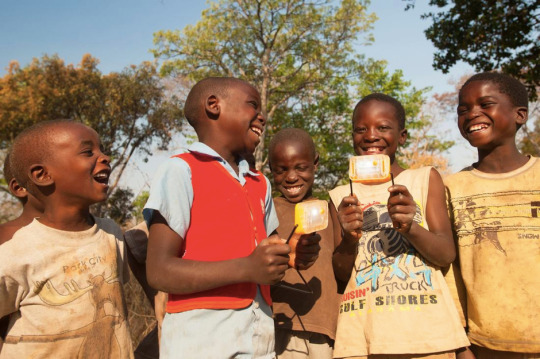
Mayamiko Trust has partnered with Sunny Money Malawi and Solar Aid to help bring light to communities in Malawi, starting from their immediate community in Chinsapo. The Chinsapo area has been facing an energy crisis due to a ban on charcoal production and the indiscriminate cutting down of trees in the local Dzalanyama Forest. The Dzalanyama Forest is a source of livelihoods and home to 10,000 households. Because of the ban, there has been a shortage of firewood for domestic purposes around Chinsapo. To add to this, most of the households under Mayamiko lab's project area do not have a sustainable source of energy such as electricity.

These households tend to use kerosene as a source of energy for light, which is hazardous to one's health and environment. To help solve this energy problem Mayamiko lab has embarked on a project to promote the use of solar power solutions through the sale and loan of affordable solar energy products to women in Chinsapo for their domestic use. Mayamiko has set up a revolving fund to support the initial investment of those willing to enter the reseller scheme, as well as individual buyers. Coupled with solar education training modules, the reseller scheme enables women to create their own business by selling solar lights to other members of their community, while educating on the financial, health and environmental benefits of using solar power and the dangers of excessive deforestation.
Bee keeping project
In 2016 Mayamiko Trust funded the training for 90 members of the Natural Resources Committee (NRC) from the village of Bamba to become beekeepers. The aim of the project was to give these people an opportunity to generate a sustainable and reliable income from the sale of pure forest honey. Upon completion of training, each trainee receives a certificate of participation, enabling them to apply for a microfinance scheme and set up their own bee-keeping business. Not only has this project changed the lives of the participants and their families it also paved the way for conservation too. By placing the hives on the outskirts of the forest they could slow down deforestation area as well as reducing the conflict between elephants and locals. It is interesting to note that the hive acts as a warning post to the elephants and elephants are scared by the sound of bees and will stay away from an area where bees resided in masses. This helps to keep the elephants deeper into the forest where themselves and the locals alike will be safer!
References
Aduna. (2016). Mayamiko: Empowering African Communities Through Ethical Fashion. [online] Available at: https://aduna.com/blogs/aduna-world/112791044-mayamiko-empowering-african-communities-through-ethical-fashion [Accessed 18 Jul. 2017].
Binkowski, K. and Binkowski, K. (2017). Creating An Ethical Fashion Brand: Paola Masperi, Founder of Mayamiko. [online] The Good Trade. Available at: http://www.thegoodtrade.com/features/paola-masperi-interview-mayamiko [Accessed 18 Jul. 2017].
Ethicalfashionforum.com. (2017). Ethical Fashion Forum. [online] Available at: http://www.ethicalfashionforum.com/source-directory/member/64 [Accessed 15 Jul. 2017].
Mayamiko. (2017). About Us. [online] Available at: https://www.mayamiko.com/pages/new-about-us [Accessed 15 Jul. 2017].
Mayamiko. (2017). bringing the light. [online] Available at: http://www.mayamiko.org/bringing-the-light.html [Accessed 17 Jul. 2017].
Mayamiko. (2017). Mayamiko. [online] Available at: http://www.mayamiko.org/ [Accessed 10 Jul. 2017].
Mayamiko. (2017). Micro-Finance Scheme. [online] Available at: http://www.mayamiko.org/micro-finance-scheme.html [Accessed 19 Jul. 2017].
Mayamiko. (2017). Our Impact. [online] Available at: http://www.mayamiko.org/our-impact.html [Accessed 14 Jul. 2017].
Mayamiko. (2017). Our Mission. [online] Available at: http://www.mayamiko.org/our-mission.html [Accessed 16 Jul. 2017].
Mayamiko. (2017). Our Products. [online] Available at: https://www.mayamiko.com/pages/our-products [Accessed 17 Jul. 2017].
Mayamiko. (2017). Our Story. [online] Available at: http://www.mayamiko.org/our-story.html [Accessed 15 Jul. 2017].
Mayamiko. (2017). The Bee Keeping Project. [online] Available at: http://www.mayamiko.org/the-bee-keeping-project.html [Accessed 21 Jul. 2017].
Solomon, L. (2013). Mayamiko Designed - Made in Malawi - SS13. [online] issuu. Available at: https://issuu.com/mayamiko/docs/mayamiko_designed_lookbook_ss13 [Accessed 17 Jul. 2017].
Uebergang, E. (2017). Creating Sisterhood In Malawi With Mayamiko - The Green Hub. [online] The Green Hub. Available at: http://thegreenhubonline.com/2017/04/17/creating-sisterhood-in-malawi-with-mayamiko/ [Accessed 19 Jul. 2017].
Wood, J. (2016). The New Ethical Fashion Brand to Know. [online] Marie Claire. Available at: http://www.marieclaire.co.uk/news/fashion-news/the-new-ethical-fashion-brand-to-know-65746 [Accessed 18 Jul. 2017].
3 notes
·
View notes
Photo

Sir Peter Markham Scott - Flying Geese Against the Aurora
267 notes
·
View notes
Text
Public Speaking
Usually when we have a lecture or class on public speaking, we get a list on how to overcomes the nerves etc. But we never actually do anything about it. Telling someone that they could be more confident if they did so and so doesn’t make them confident.
Unless they actually step outside their comfort zone and try, they won’t ever know. For the the first time in forever after we had a class on public speaking and how to be a better speaker, we got shown a random picture and were made to talk about it for 2 minutes and I loved it.
Sure, I was nervous and yes my voice quivered a bit and at one point I didn’t know what else I could say about roses (yes I was shown roses) and my self depreciating humour can only take me so far aha, but it was great! It was unexpected and colloquial and I truly think this is the only way to get rid of nerves.

Stand there in front of your class and waffle on about a random picture. But joke’s aside I’ve always been put in a situation where i was meant to speak in front of an audience, whether it was the president speech in front of the interact club, the welcome speech to all the delegates attending our conference etc. So yes, after a while I got the hang out it, and clearly I haven’t reached the calmest state whilst public speaking but I distinctively remember years ago I had to do a presentation in year 5 or 6 and my whole body started shaking and my heart was beating faster than it ever has, and I couldn’t focus on what I had to say because I was trying to stop my head from shaking which made me word vomit in front of the whole class. But it was okay because I was young and everyone get’s nervous.

Luckily my dad has always attended conferences and delivered speeches so he’s a pro at the whole speech in front of hundreds of people (no big deal). But he once told me some advice that I’ve never actually forgotten till date. He told me that in the end we’re all the human and the audience listening to you aren’t monster’s. They’re probably the same age as you are and they’re sitting there because they’d like to hear what you have to say. (okay realistically they were sitting there because they were forced to and probably weren’t even listening to what I had to say because of their own nerves or they couldn’t be bothered) but, it helped. After that day I actually improved at giving speeches and it felt great, it’s like the burden was lifted and it didn’t feel like everyone was judging me anymore.

I mean I’m Asian, even if we didn’t want to talk in front of the class growing up, we had to and yeah at the time I hated it, but now I don’t mind it. so thankyou indian education for forcing us to give presentations almost every term.
But seriously if you aren’t the best at public speaking, it’s okay but try to branch out because it’s always a good skill and it feels great when you know you’ve overcome one of your fears so don’t worry, you’ll be okay!!1
1 note
·
View note
Photo

My silent comic is now available in my store : here.
A5 size, 18 pages.
10K notes
·
View notes
Photo

Limited edition ASHISH large A2 prints available now!
6K notes
·
View notes
Text
Ethics 2.0
warning- this is not another blog post on the internet reminding you that we, as human’s are destroying the ecosystem and are the cause for the death of the planet earth as you know it, or the fact that certain political figures (cough Donald Trump cough) refuse to believe in the proven fact that global warming exists.

nOW we can start;
It has been brought to my attention that we were meant to discuss ur views on ethical fashion and i know I wrote a blog post previously about this, but I wasn’t really talking about anything specific (just the fact that I’m vegetarian)
I did actually miss this lecture sadly, but regardless I’ve slowly been trying to gain information on this matter for a while.
But, what is Ethical Fashion?
According to the EFF; “Ethical fashion represents an approach to the design, sourcing and manufacture of clothing which maximises benefits to people and communities while minimising impact on the environment.“If you describe something as ethical, you mean that it is morally right or morally acceptable.” Collins English Dictionary

“For the EFF, the meaning of ethical goes beyond doing no harm, representing an approach which strives to take an active role in poverty reduction, sustainable livelihood creation, minimising and counteracting environmental concerns.”
Okay now that we have a general idea, time for my opinion since this is my blog and the only reason we’re here is to know what I think, not what some forum defines it as.
The way I see it is, ethical fashion isn’t just about animals (of course it’s a huuuuge part) , it’s about human beings, their surroundings and the economy as a whole. As EFF said above, Ethics is loosely something that is considered morally right. From what I’ve read and heard about, the fashion industry isn’t particularly great at being fair. For example, since we have a denim project we’ve been doing a lot of research on the denim and jeans industry. It’s horrible because there’s so much exploitation involved in these industries. The workers work for hours in an unsafe workplace exposed to toxic dyes and these effluents are even dumped into rivers destroying our ecosystem. Apart from that, the workers are subjects to a procedure called “sandblasting’’, and without the right protective equipment, they could suffer from fatal lung diseases including silicosis . OH, and guess what? They’re not even paid a decent amount for basically signing a death agreement and continuing to work in these health hazard work area’s, just so we can buy overpriced jeans!!1!
Okay, that was a bit morbid, but it’s sadly true. Fair pay for fair work need’s to be enforced more seriously. Obviously I’m unaware about how the government works and how business work, but the fashion industry is known for turning a blind eye when it comes to the fair pay for textile and handloom workers to say the least.
The EFF, has listed the criteria for Ethical fashion;
Countering fast, cheap fashion and damaging patterns of fashion consumption
Defending fair wages, working conditions and workers’ rights
Supporting sustainable livelihoods
Addressing toxic pesticide and chemical use
Using and / or developing eco- friendly fabrics and components
Minimising water use
Recycling and addressing energy efficiency and waste
Developing or promoting sustainability standards for fashion
Resources, training and/ or awareness raising initiatives
Animal rights
This is a really broad topic when you think about it. there’s so much to discuss when it come’s to ethics. The criteria above is a good kick starter list to overcoming some of the issue’s the industry is facing.
The way i see it is, the fashion industry works in tier’s and even though globally everyone is mostly aware of what goes on, in the uppermost tier they need to remember that the foundation is the most important to any business/industry and in this case it’s the labourers who are the reason we have clothes on our bodies.
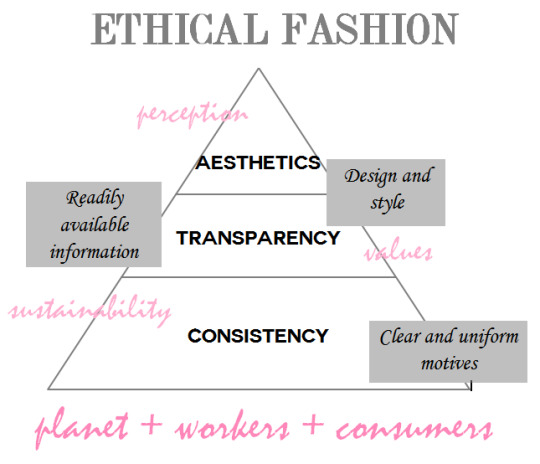
They could make something for less than £0.50, but it would be retailed for £30 or more in a high street store. Working conditions and worker’s rights needs to be improved, if it doesn’t well at some point our industry is going to collapse.
This is how it should be:

And sure not everyone is going to thrift out of now where, but don’t just throw away your clothes, someone worked really hard to produce that, you could just donate them or up cycle them. Always make use of what you have.
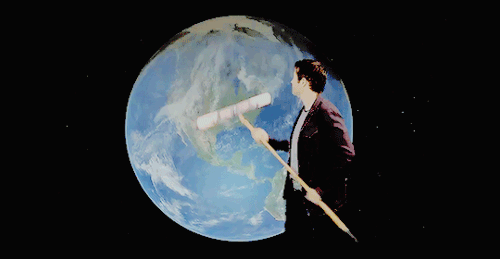
happy earth, happy life!
0 notes
Text
Tradeshows
Apart from Paris, London, Milan and New York being fashion capital’s some of these cities are known for their world renowned trade shows.
The trade shows and exhibitions that we were recently told about were the Premiere Vision, Bread & Butter Berlin (BBB) and Who’s next?



The best part is that student’s can get into these exhibitions for free and they host loads of competitions so they’re really good opportunities. The part that isn’t as great is that they’re always hosting around September and that’s when university starts again after summer, but I’m going to try my best to go at least one of the trade shows whilst i’m still at uni. It’s crazy how they manage to incorporate so much skill into one building. I can only imagine how amazing the experience must be, it might sound boring to some, but to someone who isn’t a fashion student, these are some of the biggest conventions and people from all over the world travel to visit it.
The only difference between the three is that Bread and Butter is also a place where designers can show case their work as opposed to just an exhibition and they have a catwalk like situations going on. In fact they have artist’s performing and it’s basically a concert + fashion, what else do you want?
This post is more of a reference to go back to if I ever do forget about these trade show’s (not that I will)
0 notes
Text
What is a fashion student?
Before I started university, I was intrigued by the idea of fashion and being a fashion student but I wasn’t completely sure if I fit the “fashion student” visual. What even is a fashion student? Someone who stands out because of what they’re wearing? Someone who can draw well? Someone who’s the master of pattern cutting?
Well let me tell you that its all of the above and more (wow shocker!!1! ) I just mean, people have this idea when it come’s to fashion students and I’ve definitely learned that we’re so much more than that. You don’t have to be the most amazing artist, you don’t have to be the most well dressed student and it’s certainly okay if you don’t know how to sew because you’ll learn. What you need is confidence and your trustworthy fashion eye (content stolen from Anya’s lecture yet again) But it is true, no one see’s what you see.
What you love could easily be what someone hate’s and that’s okay. If you have a gut instinct go with it, you’ll be fine. You know, it’s okay if you don’t know which designer they’re talking about in class, you’re in uni! You’re meant to be learning something every step of the way, so all’s gooooood.
No seriously, when I started off I couldn’t even thread a machine properly, but we all learn, and I’m doing fine now so nothing is impossible. The more you attend uni, the more you learn and hence more knowledgable you become about this stuff. Half the things I currently know about fashion I barely knew about before uni so at least know i’ve upgraded to 75% fashion student, who know’s what she’s doing!!1! (Sort of)
This blog post has no structure (just like my life) but i mean, it’s meant to be a reflective blog where you can word vomit whatever you want and that’s what I’m doing. I don’t personally think I can keep up with a super formal blog using fancy words to describe how well fabric drapes etc etc. We have fashion journalism, magazines (& real blogs) to read if we wanted to, but this right here is where I type randomly without looking back, so please excuse the typo’s if there are any because ya gal can’t help it.
iS THIS EVEN AN ACCEPTABLE BLOG POST for professional practise, we’ll never know.
1 note
·
View note
Photo

erica wilson stitch samplers, 1973 (Scribners)
160 notes
·
View notes
